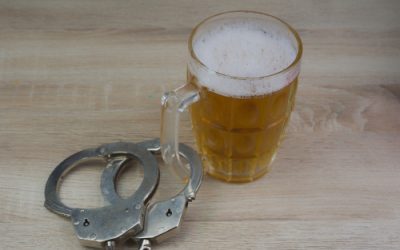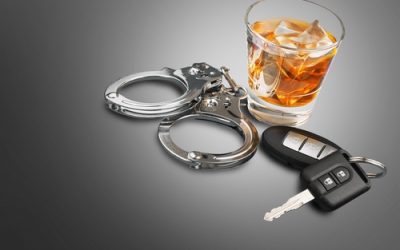Ignition interlock devices (IIDs) have a great track record when it comes to preventing drunk driving. According to the Centers for Disease Control (CDC), IIDs reduce repeat offenses for drunk driving by nearly 70% while they are installed. All 50 states have ignition interlock device laws that require ignition interlocks for certain offenders and monitor their use. But despite these laws, only about 20% of those arrested for DUI/DWI have interlocks installed
The CDC has come up with 8 program keys to strengthen state ignition interlock device programs. The CDC developed the program keys in collaboration with the National Highway Transportation Safety Administration (NHTSA) and the Governor’s Highway Safety Association (GHSA). They looked at ignition interlock device programs in 28 states over a five year period from 2006-2011 to see which keys led to higher ignition interlock use.
States can strengthen their ignition interlock device programs by implementing just one of these keys, but can magnify the impact by implementing multiple program keys.
#1 Require or Incentivize Ignition Interlock Device Use
Currently, 32 states require ignition interlock devices for ALL drunk driving convictions, including first-time offenders. The rest of the states require them for second offenses or for first-time offenders with a high blood alcohol content (BAC). For many years, though, the use of ignition interlock devices was optional. When states started to require them, usage skyrocketed.
States can also incentivize the use of IIDs by reducing or eliminating the license suspension period if a driver installs an ignition interlock device.
#2 Impose Strong Penalties
By this, the CDC means imposing strong penalties for several ignition interlock program violations, including:
- Failure to install the ignition interlock device when required to do so
- Failing the breath test or skipping the rolling retests
- Attempting to tamper with the IID
- Bypassing the program by driving another vehicle not equipped with an ignition interlock device
The CDC recommends that the penalties be swift and appropriately severe. They found penalties that work include:
- Extending the IID installation on a driver’s vehicle for another four to six months for each program violation before they can get their driver’s license reinstated
- Implementing criminal sanctions such as jail time or home monitoring if they are caught driving a vehicle not equipped with an IID
#3 Monitor Ignition Interlock Device Use
Close monitoring helps offenders get the device installed, use it correctly, and are not failing or skipping breath tests. All ignition interlock devices record all of this information, but it is up to the states to set up and utilize data tracking and monitoring systems. This includes an ignition interlock monitoring system that the courts, the Department of Motor Vehicles and any other monitoring agency can access. The CDC mentions Colorado, Virginia, and Washington as states with good monitoring programs in place.
#4 Implement Uniformity Across the State
Uniformity means consistently implementing the ignition interlock program across the state. County and state agencies should all be using the same processes and documentation. This increases the overall program efficiency and provides states with the ability to monitor offenders accurately. States should also implement uniform certification procedures for ignition interlock vendors and certified installation centers.
To be truly uniform, ignition interlock programs need to be administrative and run through an agency such as the DMV. When programs are judicial, uniformity is impossible, as each case is left up to an individual’s judgment.
#5 Coordinate Across Agencies
For an ignition interlock program to be truly successful, states need to coordinate across agencies, and with other stakeholders. These include:
- Law enforcement
- Prosecutors
- Judges
- Parole and probation
- Licensing
- Alcohol treatment programs
- Ignition interlock vendors
The CDC singles out Colorado, Oregon, and Texas as good examples, where they regularly hold meetings and conferences to discuss drunk driving, ignition interlocks, education, overall program assessment, and more.
#6 Educate Stakeholders About the Ignition Interlock Program
Stakeholders include the educators themselves, and every agency involved in a state’s ignition interlock program. This includes training in how the devices actually work, how to read the data, how to monitor an offender’s progress, and much more. States can hold seminars for the public to educate them about the program. Judges, prosecutors, and defense attorneys can include ignition interlocks as a topic at conferences.
#7 Provide Adequate Resources
A successful ignition interlock program needs adequate staff and funding. In addition, other resources can help a state set up a financial assistance program for low-income offenders to install interlocks. Colorado, North Carolina, Missouri, and Oregon all help cover the costs of ignition interlock devices for low-income offenders. They do this by sending all or a portion of certain fees into a financial aid fund.
#8 Use Data to Catch Violators and Improve the Program
A good digital record keeping system is essential to identifying offenders who are required or eligible to install an interlock. Once the devices are installed, the data helps agencies monitor offenders and report violators. Furthermore, data can be used to evaluate program effectiveness and show where there is room for improvement. Implementing computer systems that can link agencies and utilizing software that automatically uploads data and issues notifications can help streamline efforts.
ALCOLOCK — A Pioneer in Ignition Interlock Devices
ALCOLOCK provides state certified installation and monitoring of ignition interlock devices. We currently operate in California, Montana, Arizona, New Mexico, Texas, Minnesota, Iowa, Illinois, Florida, Tennessee North Carolina, Virginia, Maryland, Pennsylvania, Ohio, Michigan, New York, Connecticut, and Vermont.


